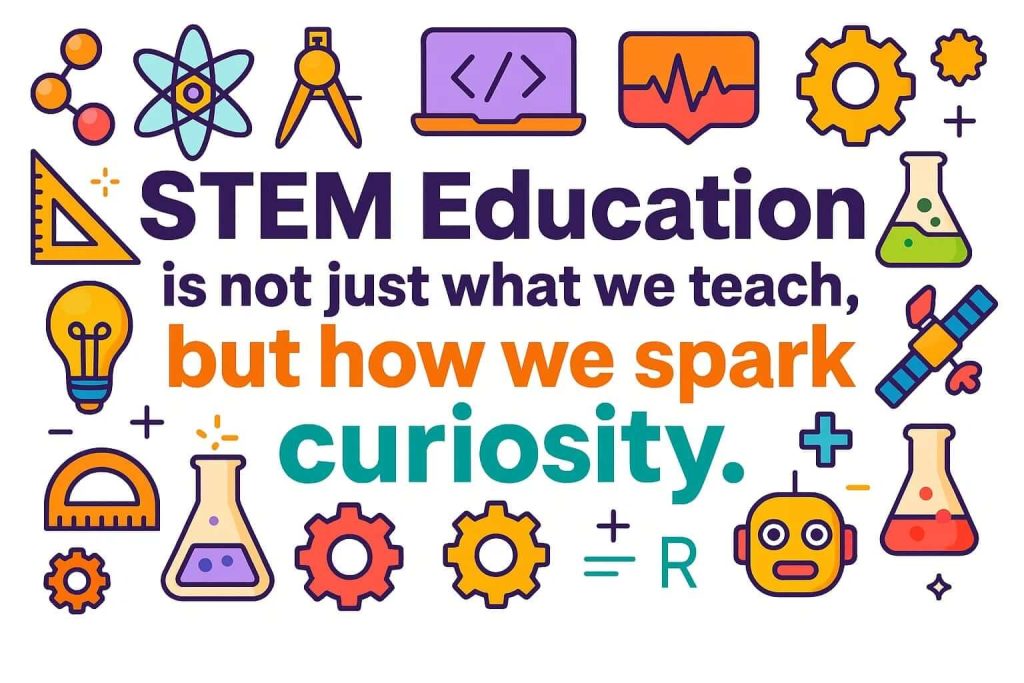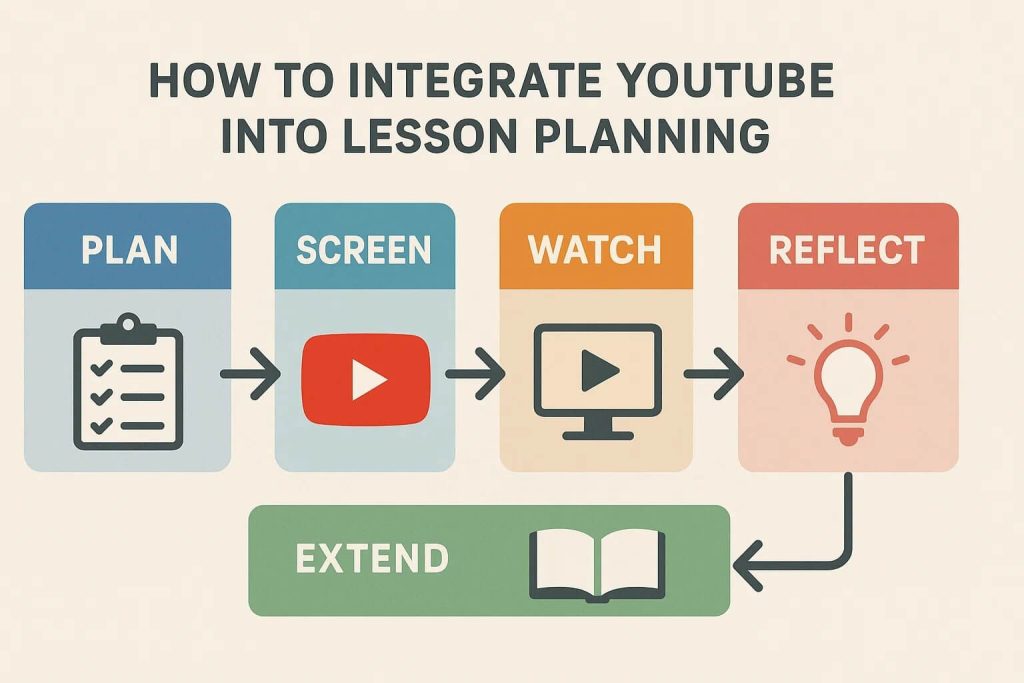Video has become an essential tool for teaching complex STEM concepts in ways that are both accessible and inspiring. Whether you’re introducing a new topic, supporting a flipped classroom model, or enriching project-based learning, the right YouTube channel can turn theory into something students can see, explore, and get excited about.
With thousands of STEM-focused creators online, it can be difficult to know which ones offer real educational value. This curated list highlights ten standout YouTube channels that deliver high-quality, engaging content suitable for STEM educators across a range of year levels.
10 Recommended STEM YouTube Channels
Here are ten standout YouTube channels that consistently offer engaging, classroom-friendly content across science, technology, engineering, and maths. Each one brings a unique style and purpose, making them excellent tools for STEM educators looking to deepen student learning or spark fresh interest.
1. Veritasium
Veritasium explores scientific concepts and paradoxes through compelling storytelling, often challenging common misconceptions.
- Why it’s useful: Encourages critical thinking and inquiry-based discussion
- Suggested video: “The Most Misunderstood Concept in Physics”
2. Mark Rober
Run by a former NASA engineer, this channel delivers high-energy experiments and DIY engineering builds with wide appeal.
- Why it’s useful: Ideal for project-based learning and real-world STEM connections
- Suggested video: “World’s Largest Elephant Toothpaste Experiment”
3. TED-Ed
TED-Ed offers beautifully animated lessons across STEM and humanities topics, designed with educators in mind.
- Why it’s useful: Great for topic introductions or concept reinforcement
- Suggested playlist: “Math in Real Life”
4. STEMedia
Celebrating diversity in STEM, STEMedia highlights creativity, innovation, and underrepresented voices in science and engineering.
- Why it’s useful: Supports inclusive teaching and career pathway exploration
- Suggested video: “What is STEM Media?”
5. SmarterEveryDay
This channel uses high-speed cameras and hands-on investigations to explore scientific phenomena in everyday life.
- Why it’s useful: Helps students link abstract concepts to the real world
- Suggested video: “The Backwards Brain Bicycle”
6. Numberphile
Focused on the beauty of mathematics, Numberphile dives into mathematical puzzles, patterns, and theories.
- Why it’s useful: Perfect for enrichment and sparking curiosity in maths
- Suggested video: “Why Do People Hate Mathematics?”
7. Physics Girl
Physics Girl offers hands-on experiments and thought-provoking explanations for physics questions big and small.
- Why it’s useful: Engages visual and kinaesthetic learners
- Suggested video: “Can You Go Faster than Light?”
8. SciShow
SciShow covers a wide range of science topics with regular updates and clear, engaging explanations.
- Why it’s useful: Keeps lessons current and ties topics to global issues
- Suggested playlist: “SciShow Kids” (for younger learners)
9. CrashCourse
Known for its fast-paced and visually rich lessons, CrashCourse covers everything from physics to computer science.
- Why it’s useful: Excellent for topic overviews and flipped learning
- Suggested playlist: “CrashCourse Computer Science”
10. Kurzgesagt – In a Nutshell
This channel delivers big-picture science topics with elegant animations and a calm, explanatory tone.
- Why it’s useful: Ideal for stimulating discussion on systems thinking and ethics in STEM
Suggested video: “The Fermi Paradox”
Why YouTube Is a Valuable Resource for STEM Teachers
YouTube has become a dynamic platform for professional learning and classroom enrichment, particularly in STEM education. When used purposefully, it offers teachers access to global expertise, diverse teaching styles, and visual explanations that can enhance understanding across a range of topics.

Accessible, Up-to-Date, and Visual
STEM subjects often involve abstract or technical concepts, and high-quality videos can make these ideas more accessible through animation, slow-motion demonstrations, and real-world context. Unlike static textbooks, YouTube channels are continuously updated, giving educators access to current content that reflects emerging discoveries and tools.
Supports Inquiry-Based and Project-Based Learning
Well-curated videos can serve as excellent catalysts for questions, investigations, and collaborative tasks. Whether you’re introducing a new topic, extending classroom discussion, or flipping your instruction, YouTube enables students to explore content at their own pace and revisit complex ideas as needed. It also fosters curiosity, allowing learners to follow their interests beyond the curriculum in a meaningful, student-led way.
Tips for Using YouTube Content in the Classroom
While YouTube is rich with potential, using it strategically can make the difference between passive viewing and active learning. These tips can help you integrate video content meaningfully into your STEM teaching practice.

Curate and pre-screen: Select short, relevant clips that align with your lesson objectives. Watch all the way through before class to ensure content is age-appropriate and accurate. Many educators within AISL Mall’s network embed YouTube videos into Google Slides or online learning platforms for smooth delivery.
Use pause-and-discuss techniques: Don’t let videos run from start to finish. Pause at key moments to ask questions, make predictions, or clarify terminology. This keeps students engaged and encourages deeper processing.
Connect to hands-on learning: Use a video to kick off a STEM investigation, introduce a real-world problem, or reinforce learning after a practical activity. For example, a Mark Rober experiment could inspire a student-designed project using recycled materials.
Encourage independent exploration: Invite students to subscribe to selected channels for enrichment, flipped homework, or inspiration for their own science fair projects. It fosters autonomy and allows learning to continue beyond the classroom.
Make YouTube a Trusted STEM Teaching Ally
YouTube can be a powerful extension of your STEM toolkit, offering fresh perspectives, real-world connections, and engaging explanations that support both student curiosity and academic rigour. The key is choosing the right channels and integrating them in ways that enhance your existing teaching strategies.
Start small. Subscribe to a few of the recommended channels that align with your subject area or teaching style, and explore how they might enrich an upcoming unit or inspire student-led inquiry. When used purposefully, these resources can support the kind of creative, interdisciplinary thinking that lies at the heart of STEM learning.
For more curated teaching tools, digital learning strategies, and insights from progressive international educators, explore the resources available at AISL Mall.









